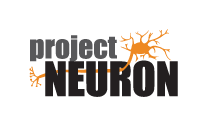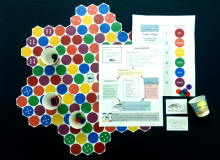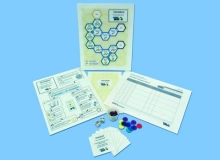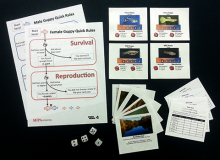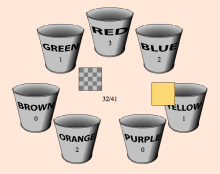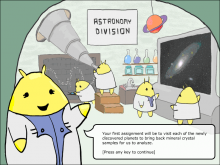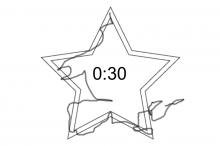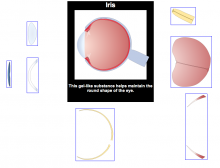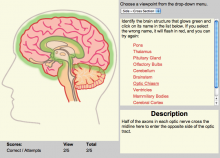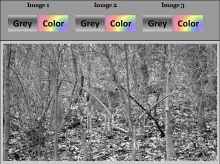Games
These activities are fun to explore in informal settings or as activities within our lesson plans.
-
In Bio Bay, students play as tuna and anchovies trying to collect as many tokens (food) as possible. There are plentiful zooplanktons for the anchovies, but you might get caught by a tuna! And anyone could get caught by the Fishing Boat (the teacher) at any time! How long can you survive? Can you collect the most tokens?
This game models biomagnification of a toxicant (mercury) in an aquatic ecosystem. After students play the game, they engage in NGSS practices such as Data Analysis and Interpretation and Developing and Using Models to explain how biomagnification works in the game.
-
Swarm! is a cooperative board game in which a classroom of students act as bees in a hive by producing food, taking care of larvae, and surviving unexpected events! Designed by honey bee experts at the University of Illinois at Urbana-Champaign, this educational game demonstrates how honey bees work together--as well as individually--to help the colony thrive.
-
The Guppy Game is a board game in which students take on the role of female or male guppies who are trying to survive and reproduce in various habitats, from the Amazon to a fish tank. Students record their successes and examine how visual perception or characteristics can be mitigated by the environment and affected by the selective pressures of evolution. For instance, a brightly colored male guppy cannot hide well from a predator, but he may be able to attract a mate more easily. A female guppy with a strong color preference (sensory bias) may be able to find food more easily, but could have a hard time choosing a mate.
-
NOTE: Due to the end of Flash, this game is currently unavailable. We are looking into options for reviving it. If you would like to help or be notified when this game is back, please email us at impactscied@illinois.edu. Thank you for your patience.
How well can you treat a patient and gain the acceptance of your medical team? In this game, you assume the role of a medical student who follows a patient with a traumatic brain injury.
This game can be integrated into Lesson 1 through 3 of the larger Why dread a bump on the head? unit on the neuroscience of traumatic brain injury or as part of a "mini-curriculum" that surrounds only the game (see links to the curriculum units below). The lesson plans within the units provide an overview of the game, more information on how to play the game, and how it can be used in the classroom.
-
NOTE: We are working on reviving this game and expect it to be available in early 2023. If you would like to be notified when this game is back, please email impactscied@illinois.edu. Thank you for your patience.
“What color is this?” A simple question with sometimes surprising results! Try this activity to test how you might sort various colors and compare your choices with those of other people!
As part of the Do you see what I see? unit, students investigate how color is perceived. Play this game with friends to see how you might perceive and sort colors differently. Remember that there is not one "correct" way of sorting!
When you're time is up, you can see a graph on how other people sorted a specific color by placing your cursor over the various paint chip.
-
The Greeble Game was retired in early 2023 and is no longer available. We apologize for any inconvenience. Please contact us with any concerns.
[Previous description:] Help the aliens collect red crystals in this challenging and fun space adventure game! Test your skills at determining colors on planets with different colors of light and experience how the environment affects our perceptions of color. Programmed by Gavin Owen. Illustrations by H. Lauren.
-
One of our most popular activities! How long does it take to trace a shape while looking in a mirror? See how well you can retrain your brain to adapt to new tasks by comparing the time it takes you to trace four different shapes.
You can see how others have done at this task on our Mirror Tracing Gallery page!
-
Construct a mammalian eye from the individual structures while learning about their functions. This activity can be used as an assessment or an alternative to a cow eye dissection.
-
Explore the brain inside and out! Identify the parts of the brain and learn their functions. Can you get them all right?
Programmed by Quinn Baetz.
-
How well can you see without the advantage of your color vision? This activity illustrates why different types of vision may have evolved.

